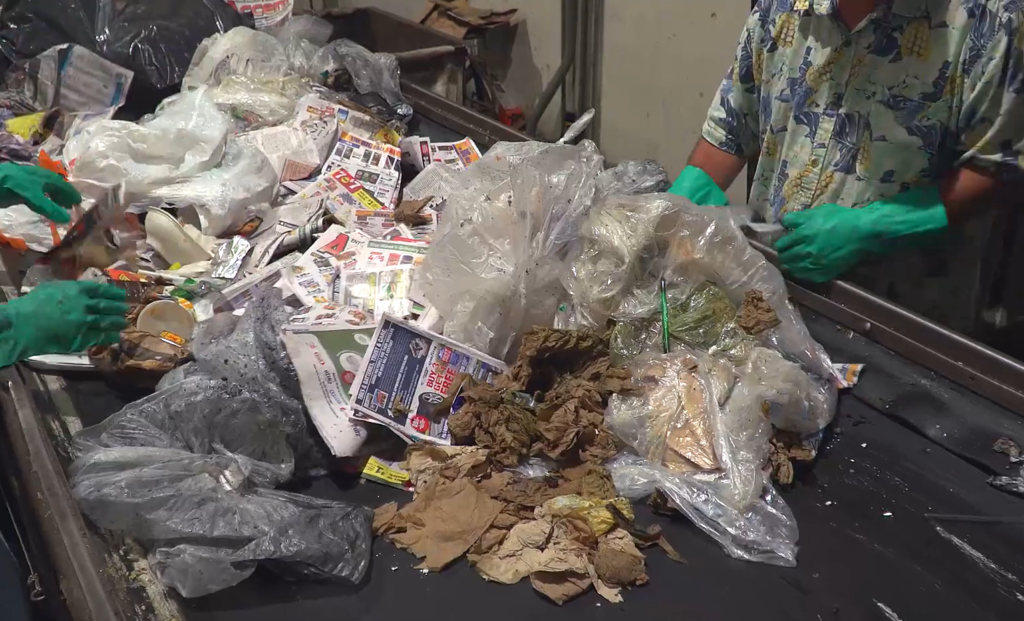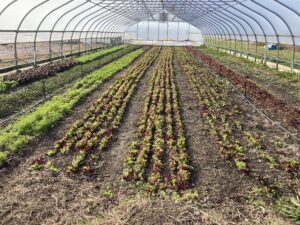The Institute for Sustainability, Energy, and Environment (iSEE) is providing seed funding for two new research projects at the University of Illinois Urbana-Champaign that will use automation to enhance waste sorting for campus recycling efforts and reduce manual labor costs in small urban farming operations.
 Both projects are funded through iSEE’s 2023 Campus as a Living Laboratory (CALL) program, which supports research teams that tackle interdisciplinary sustainability issues on campus or in neighboring communities. They focus on leveraging campus infrastructure and enhancing researchers’ capacity to address critical knowledge gaps and ultimately secure major federal, foundation, or private funding.
Both projects are funded through iSEE’s 2023 Campus as a Living Laboratory (CALL) program, which supports research teams that tackle interdisciplinary sustainability issues on campus or in neighboring communities. They focus on leveraging campus infrastructure and enhancing researchers’ capacity to address critical knowledge gaps and ultimately secure major federal, foundation, or private funding.
“U of I researchers are applying the latest advances in machine learning and artificial intelligence (AI) technology to overcome environmental challenges confronting our communities and the world at large,” said Jeremy Guest, iSEE Associate Director for Research. “Through these grants, our engineers, scientists, and university staff will tackle the pervasive problem of municipal waste and help make sustainable farming more accessible to all, using our own facilities as a model.”
The U.S. EPA estimates that half of municipal solid waste ends up in landfills, contributing to significant methane emissions that harm our climate, and the problem is growing with the spread of urbanization. New refined resource recovery methods are needed to expand recycling and meet the demands of global recycling firms for higher-quality material. Robotic systems with mechanical arms and machine learning can sort waste more efficiently, reducing processing time and turning waste into treasure.
A new project led by Nishant Garg, Assistant Professor of Civil and Environmental Engineering, will use advances in computer vision to more efficiently classify the more than 5,000 tons of waste generated on campus each year, which is now sorted by hand for recycling. Using cameras installed at the Waste Transfer Station, a machine-learning model will classify waste on a conveyer belt into six categories: paper, plastic, food, metal, glass, and yard waste. It will feed that data into a live dashboard, to motivate the campus community to follow best practices for waste disposal and recycling and to help meet zero-waste goals in the Illinois Climate Action Plan (iCAP).
 Another new project addresses the manual labor costs associated with high tunnels — curved metal structures covered with greenhouse plastic that are ideal for growing plants on small urban farms. Cost-effective and adaptable, these high tunnels can extend the growing season, protect against severe weather, increase crop yields, and improve the quality of fruits, vegetables, and cut flower. But they are labor-intensive, requiring an extra layer of management to ensure quality crops.
Another new project addresses the manual labor costs associated with high tunnels — curved metal structures covered with greenhouse plastic that are ideal for growing plants on small urban farms. Cost-effective and adaptable, these high tunnels can extend the growing season, protect against severe weather, increase crop yields, and improve the quality of fruits, vegetables, and cut flower. But they are labor-intensive, requiring an extra layer of management to ensure quality crops.
The Robot Integrated High Tunnels (RobInHighTs) project will use AI-powered robotics to automate operations for high tunnels at the Sustainable Student Farm – leading to improved crop yields, reduced manual labor costs, and higher profits. Led by Naveen Kumar Uppalapati, Research Scientist at the National Center for Supercomputing Applications (NCSA), the team will also evaluate the profitability of RobInHighTs and identify barriers to their use by urban and minority farmers. RobInHighTs can ultimately help transition amateur urban gardeners and growers into profitable long-term farmers, enabling efficient and fresh local food production and opening up new income streams for small and underserved communities.
Read more about the Campus as a Living Lab program and current and past projects >>>
Seed-funded teams are expected to work with iSEE to submit proposals for external funding of at least $1M.
“We are excited to work with these teams to help grow these projects into full-fledged interdisciplinary research programs,” Guest said.
— News release by Julie Wurth, iSEE Communications Specialist